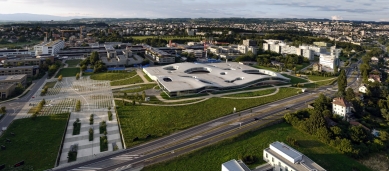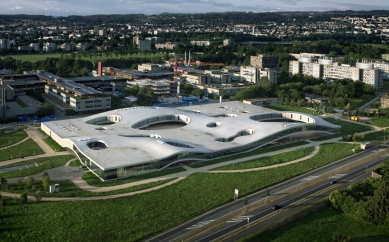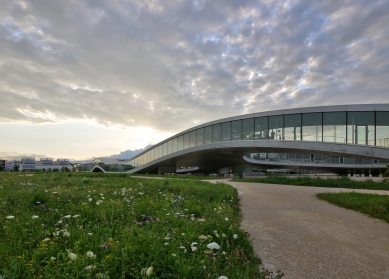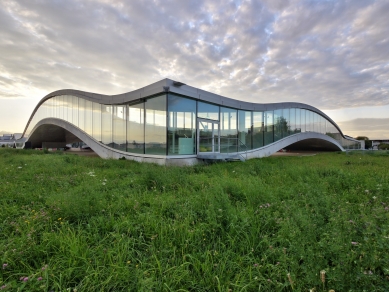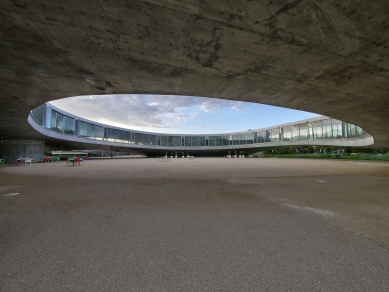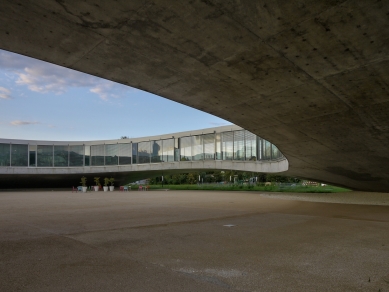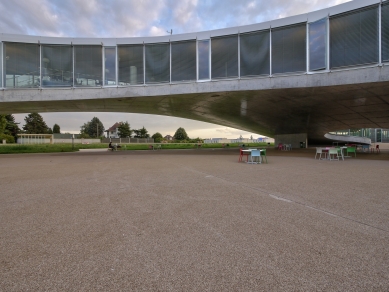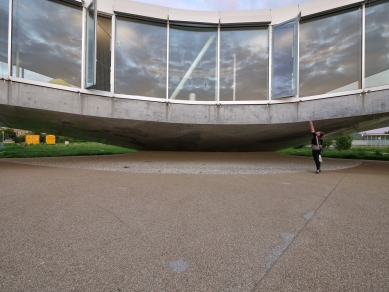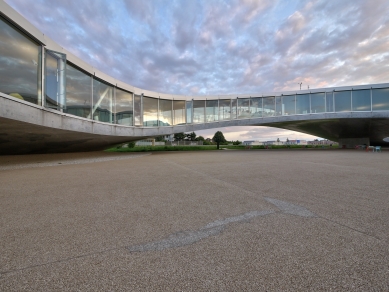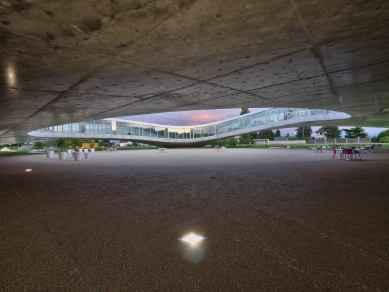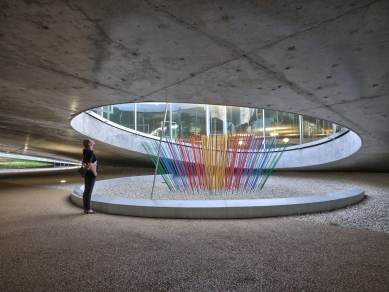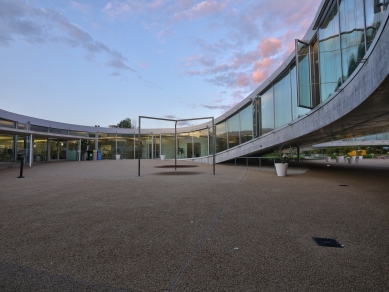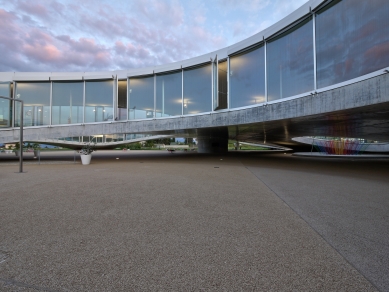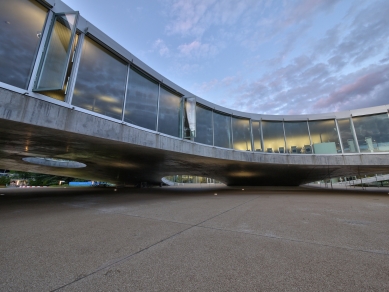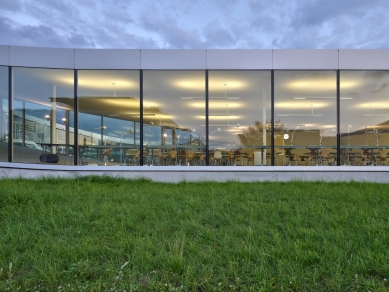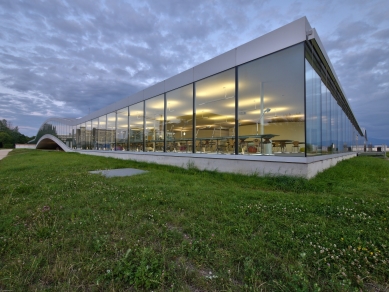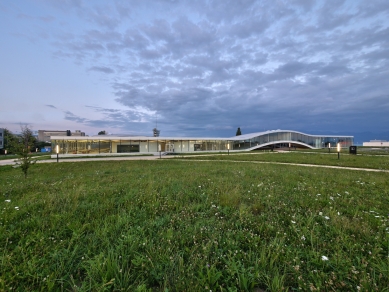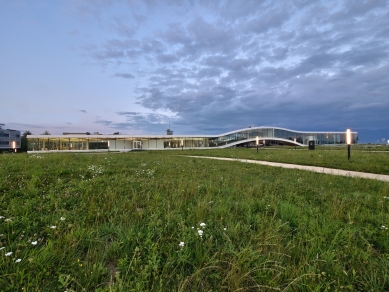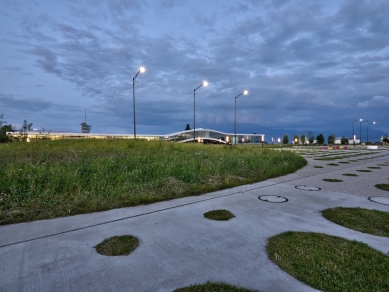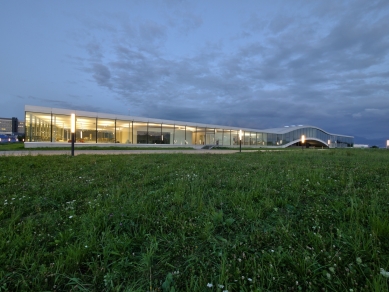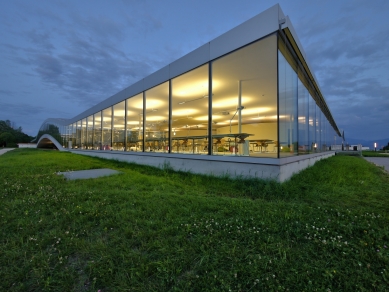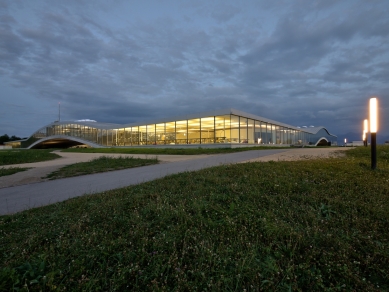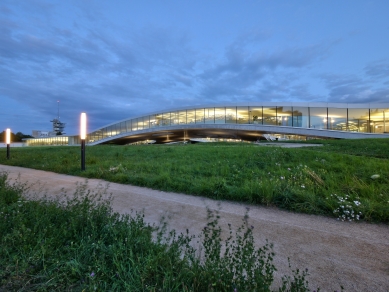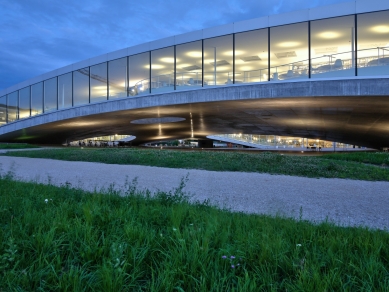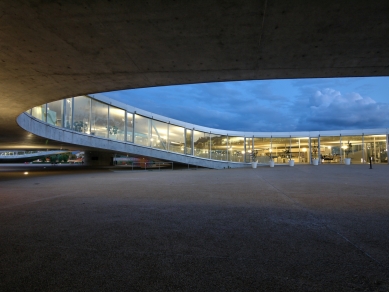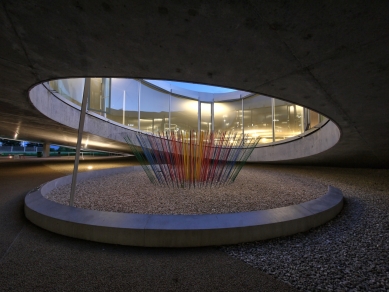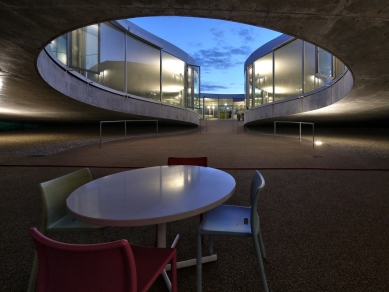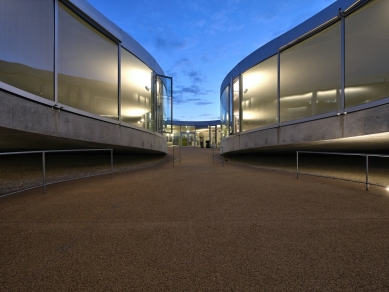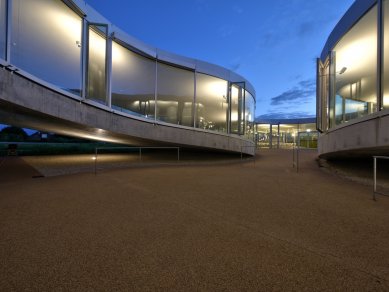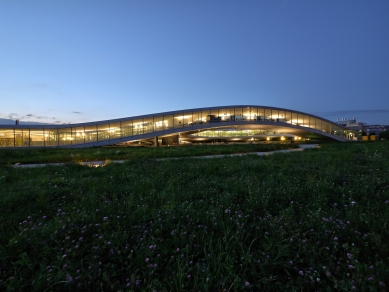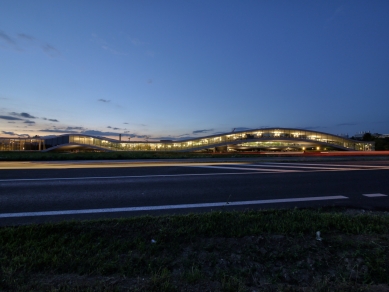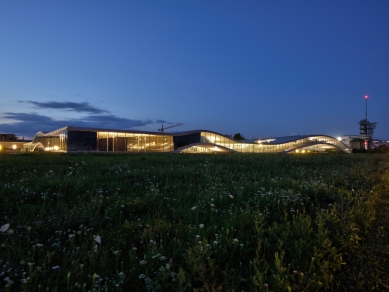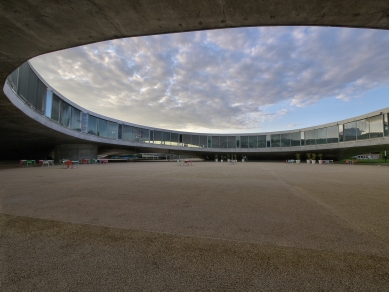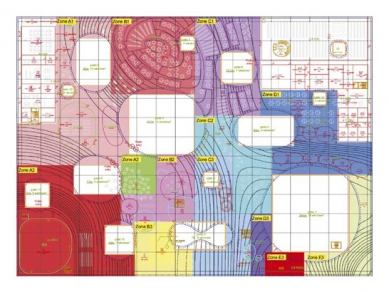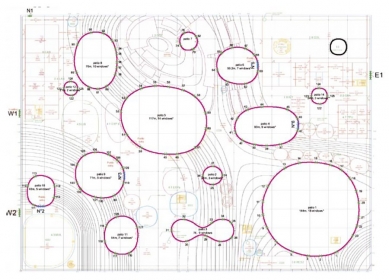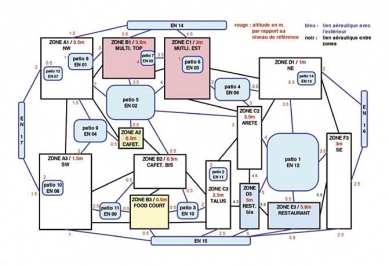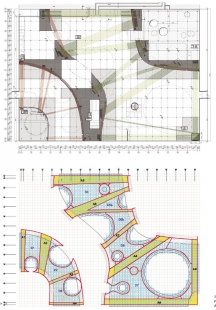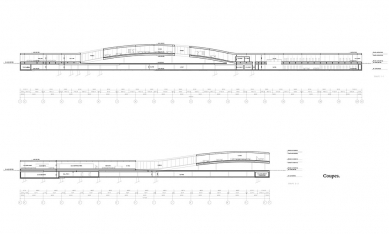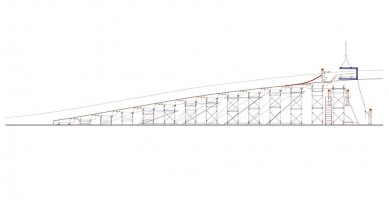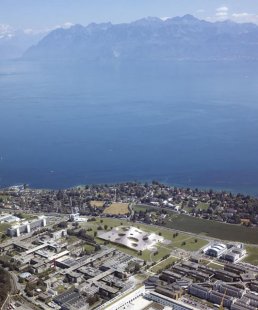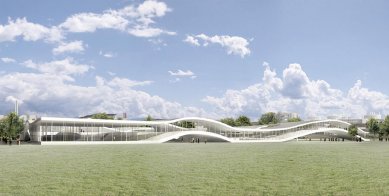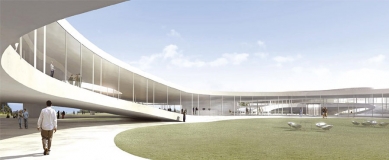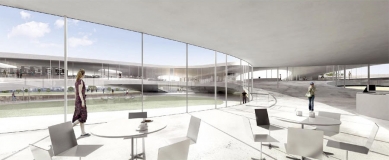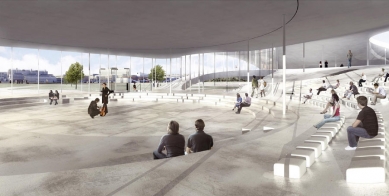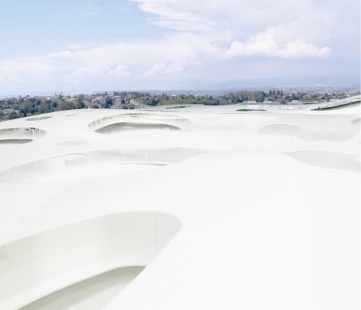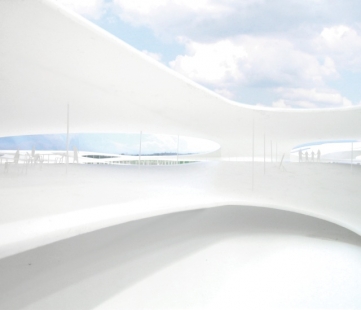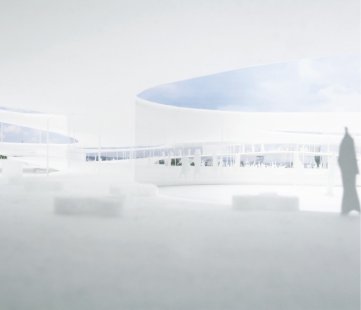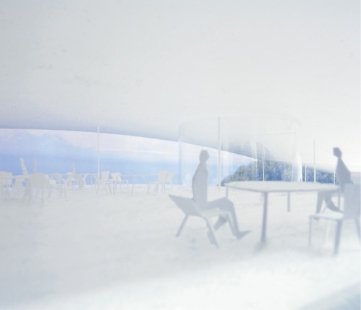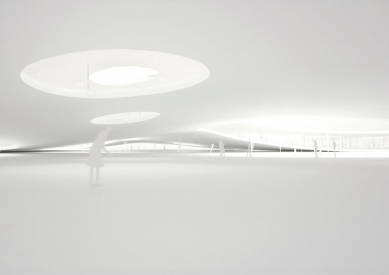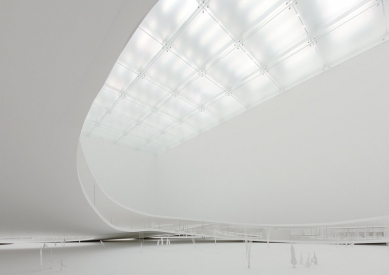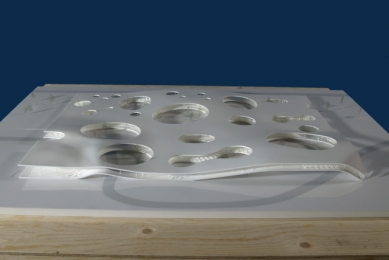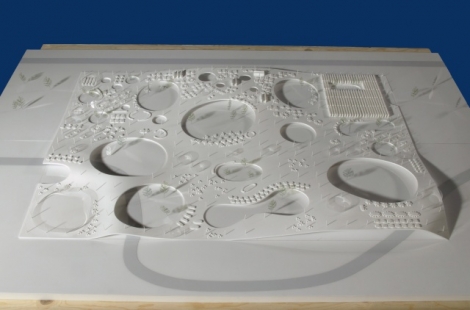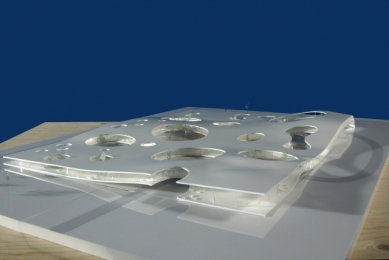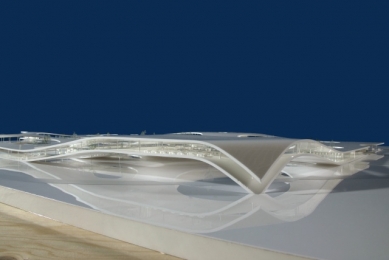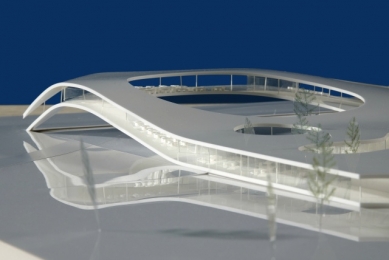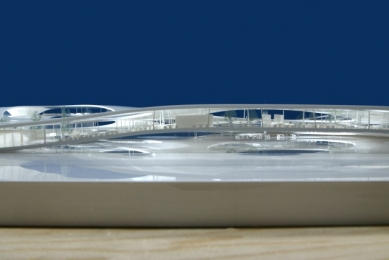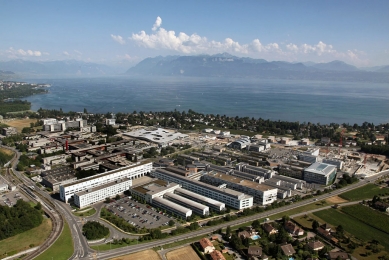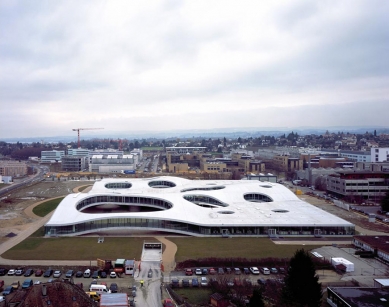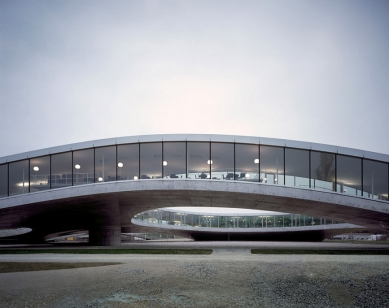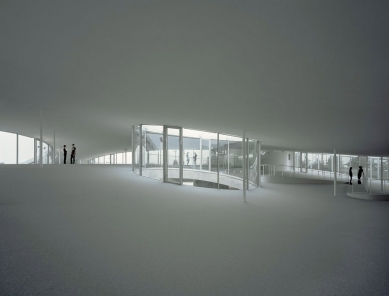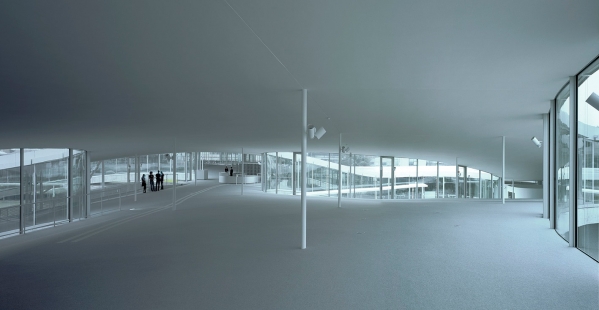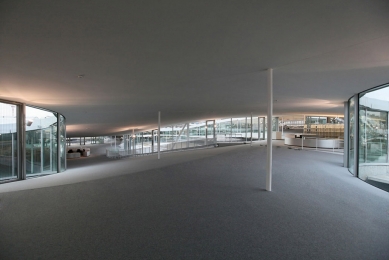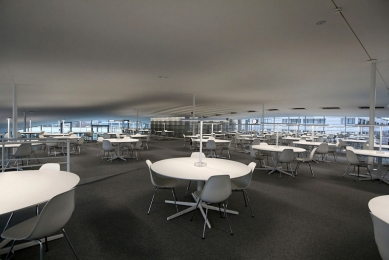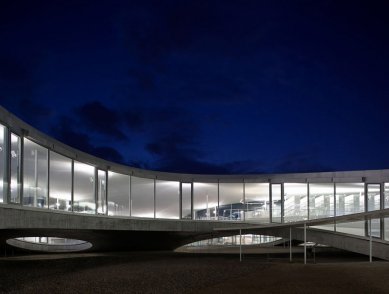
Rolex Learning Centre

The EPFL Learning Center is a center for exchange and exploration of ideas for everyone. It functions as a catalyst for the breeding of new relationships both within the academic realm and with society.
This is a place that will be full of unintended encounters, where you might bump into an old friend, become inspired by another work group, or discover your favourite book. People will feel connected in the large open space but when privacy is desired, enclosed areas are provided for engaged activities.
All functions are contained in a large one-room landscape filled with daylight and access to natural ventilation, creating very interior spaces. The building sits low on the ground so as not to disturb the views towards the lake. On the ground level, below the slab, people can pass through, arrive at main entry and at other various patios and event areas.
The Learning Center has a clear access organization with one main entry. The spaces within are loosely defined by contours, light wells and patios of various scales to create atmospheres from wide-open public spaces to quiet and private areas. The different levels and openings allow for views towards the lake and landscapes outside but also to the activities and landscapes within. This enables visitors to quickly locate themselves within the center and provides frequent opportunities to see and feel connected to the activities of learning and culture at once.
The gently undulating structure has been relined in a parallel process-searching for an ideal spatial quality and an efficient structure. Finite element analysis was used to derive an optimum geometry to enclose maximum space with minimum material. The result is a 600 - mm reinforced - concrete- shell structure spanning approximately 80m. This concrete is also useful as a thermal mass to help increase user comfort. The gentle undulating shape ensures local wind breathing by low wind resistance; local over and under pressures which activate cross ventilation of the building through the landscape lightwells. The spaces underneath become useful spaces, when external temperatures are not extreme.
The Learning Center is located centrally on the green area of the south sector and inhabits a low-density rectangular footprint. It is sited so as to be near to both existing and future population centers [EPFL, UNIL and future student housing] yet leave a percentage of the south sector clear, allowing for future development. Large courtyard gardens provide the campus with green space regardless of future densification. Bus and personal transport routes are reorganized to arrive within the perimeter of the Learning Center, further blurring the distinction between building and landscape.
This is a place that will be full of unintended encounters, where you might bump into an old friend, become inspired by another work group, or discover your favourite book. People will feel connected in the large open space but when privacy is desired, enclosed areas are provided for engaged activities.
All functions are contained in a large one-room landscape filled with daylight and access to natural ventilation, creating very interior spaces. The building sits low on the ground so as not to disturb the views towards the lake. On the ground level, below the slab, people can pass through, arrive at main entry and at other various patios and event areas.
The Learning Center has a clear access organization with one main entry. The spaces within are loosely defined by contours, light wells and patios of various scales to create atmospheres from wide-open public spaces to quiet and private areas. The different levels and openings allow for views towards the lake and landscapes outside but also to the activities and landscapes within. This enables visitors to quickly locate themselves within the center and provides frequent opportunities to see and feel connected to the activities of learning and culture at once.
The gently undulating structure has been relined in a parallel process-searching for an ideal spatial quality and an efficient structure. Finite element analysis was used to derive an optimum geometry to enclose maximum space with minimum material. The result is a 600 - mm reinforced - concrete- shell structure spanning approximately 80m. This concrete is also useful as a thermal mass to help increase user comfort. The gentle undulating shape ensures local wind breathing by low wind resistance; local over and under pressures which activate cross ventilation of the building through the landscape lightwells. The spaces underneath become useful spaces, when external temperatures are not extreme.
The Learning Center is located centrally on the green area of the south sector and inhabits a low-density rectangular footprint. It is sited so as to be near to both existing and future population centers [EPFL, UNIL and future student housing] yet leave a percentage of the south sector clear, allowing for future development. Large courtyard gardens provide the campus with green space regardless of future densification. Bus and personal transport routes are reorganized to arrive within the perimeter of the Learning Center, further blurring the distinction between building and landscape.
SANAA
1 comment
add comment
Subject
Author
Date
Super
Martin4
25.05.14 12:44
show all comments







